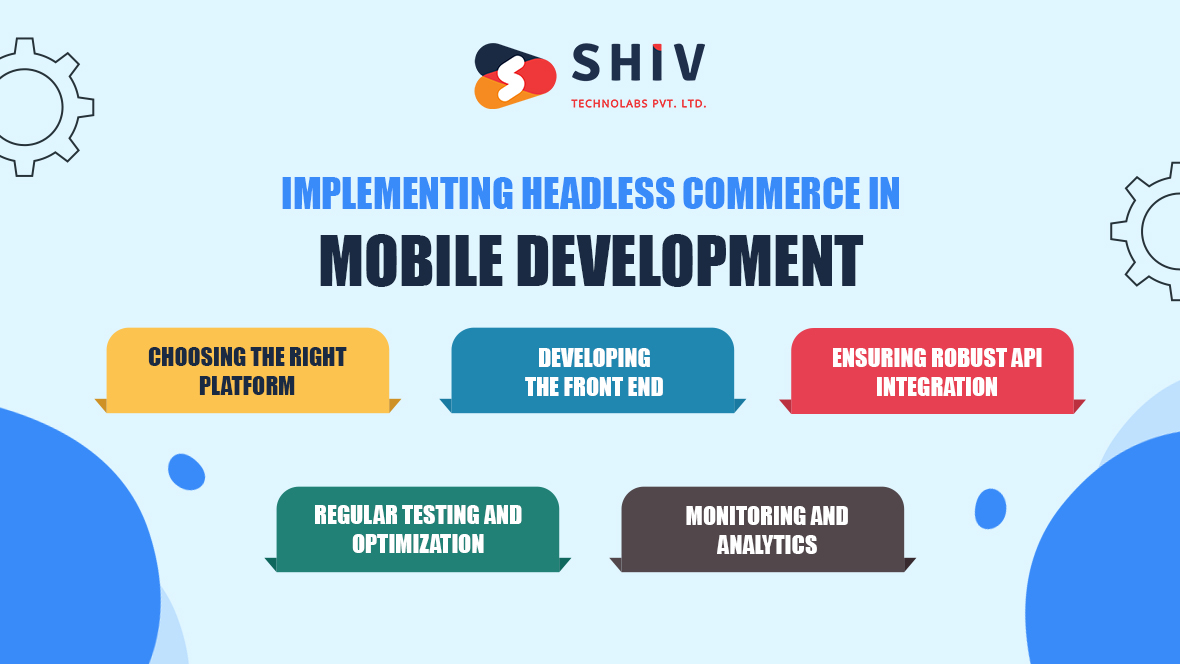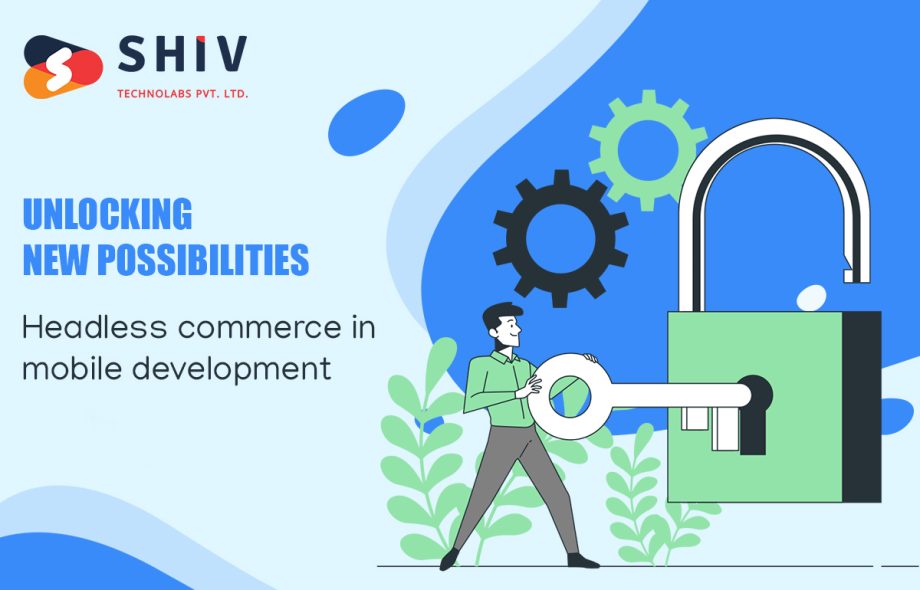Businesses are continually looking for new ways to improve consumer experience and make their operations more efficient. In this regard, one of the most significant trends is headless commerce, particularly in its use in mobile development. This innovative approach separates the front-end presentation layer of a website or app from the back-end eCommerce functionality, thus providing absolute flexibility and customization options.
Headless Commerce: Overview

Headless Commerce: Overview
Headless commerce is a type of eCommerce architecture where the front-end or “head” is separate from the back-end commerce functionality. The architecture enables developers to push products, user profiles, and other eCommerce features across any screen or device through APIs and retain independent control over the content presentation layer.
Fundamentally, the back end is a robust engine that powers different front-ends such as websites, mobile apps, IoT devices, and even AR/VR. Companies that have adopted headless commerce see an average 24% increase in revenue.
Benefits of Headless Commerce in Mobile Development
Enhanced flexibility
With headless commerce, hybrid mobile app development services can develop or revamp mobile applications without restructuring the entire system. This flexibility is invaluable in an era where user interface trends and customer preferences evolve rapidly. Developers can implement new designs and adjust user interfaces to enhance user experience and engagement without backend modifications.
Improved user experiences
By adopting a headless approach, businesses can craft bespoke mobile experiences tailored to their audience’s needs and the specificities of mobile usage. This focus on creating a custom, streamlined user interface can significantly improve the app’s performance, responsiveness, and accessibility, leading to better customer satisfaction and increased conversions.
Faster time-to-market
Headless commerce allows developers to work on the front end and back end simultaneously, thanks to their independence. This concurrency can dramatically reduce the time-to-market, as front-end developers do not need to wait for back-end changes to implement new features or updates. It also enables quicker responses to market changes or customer feedback, keeping the mobile app fresh and competitive.
Easier integration with modern technologies
The API-driven approach of headless commerce simplifies the integration of modern technologies, such as AR/VR, advanced analytics, and AI. These technologies can be integrated directly into the mobile app to enhance functionality and user engagement without disrupting backend processes.
Scalability
Headless commerce systems are inherently more scalable. As the front end is decoupled from the back end, scaling each component can be done independently based on demand. This is particularly advantageous for mobile applications expecting fluctuating user numbers and interaction levels.
Implementing Headless Commerce in Mobile Development

Implementing Headless Commerce in Mobile Development
Choosing the right platform
The foundation of a successful headless commerce implementation is selecting a platform that robustly supports APIs and headless architectures. Platforms like Shopify, Magento, and BigCommerce offer extensive API support and are known for their flexibility and reliability in handling complex eCommerce operations. Select a platform that not only fits your current business needs but also offers scalability for future growth.
Developing the front-end
Develop the front end of your mobile app to create an engaging and responsive user experience. Utilize modern front-end technologies that support cross-platform functionality, such as React Native or Flutter. These frameworks allow developers to build a high-quality UI that operates smoothly across both Android and iOS devices, ensuring consistency in user experience no matter the device.
Ensuring robust API integration
APIs are crucial for connecting the decoupled front end of your application with backend services. Ensure that these APIs are efficient, secure, and capable of handling large volumes of data with minimal latency. Proper management of API calls is essential to maintain fast response times and a smooth user experience, which can be achieved through techniques like caching and batch processing.
Regular testing and optimization
Conduct continuous testing cycles throughout the app development process to ensure every component works correctly and efficiently. Use automated testing tools to streamline this process and detect issues early. Optimization should be an ongoing effort post-launch to ensure the application adapts to user feedback and evolving market conditions.
Monitoring and analytics
Implement monitoring tools to track the performance of your mobile app in real-time. Monitoring helps in quickly identifying and addressing any operational issues that may arise. Additionally, integrate analytics to gather insights on user behavior and app performance, guiding further refinements and feature developments.
Conclusion
The integration of headless commerce into mobile app development represents a significant shift towards more agile, user-centric, and scalable business operations. By decoupling the front end and back end, businesses gain the ability to innovate faster and meet the evolving expectations of modern consumers.
Leveraging the expertise of Shiv Technolabs, a reputable hybrid mobile app development agency, can further enhance this transition. With headless commerce, the possibilities are as limitless as the technologies it supports, making it an essential strategy for any forward-thinking business.



 :
:









